4. Description of SkyMax electric paramotor.
In a previous article, a photograph of the internal structure of the used battery in the project was already featured. She - in assembled form:
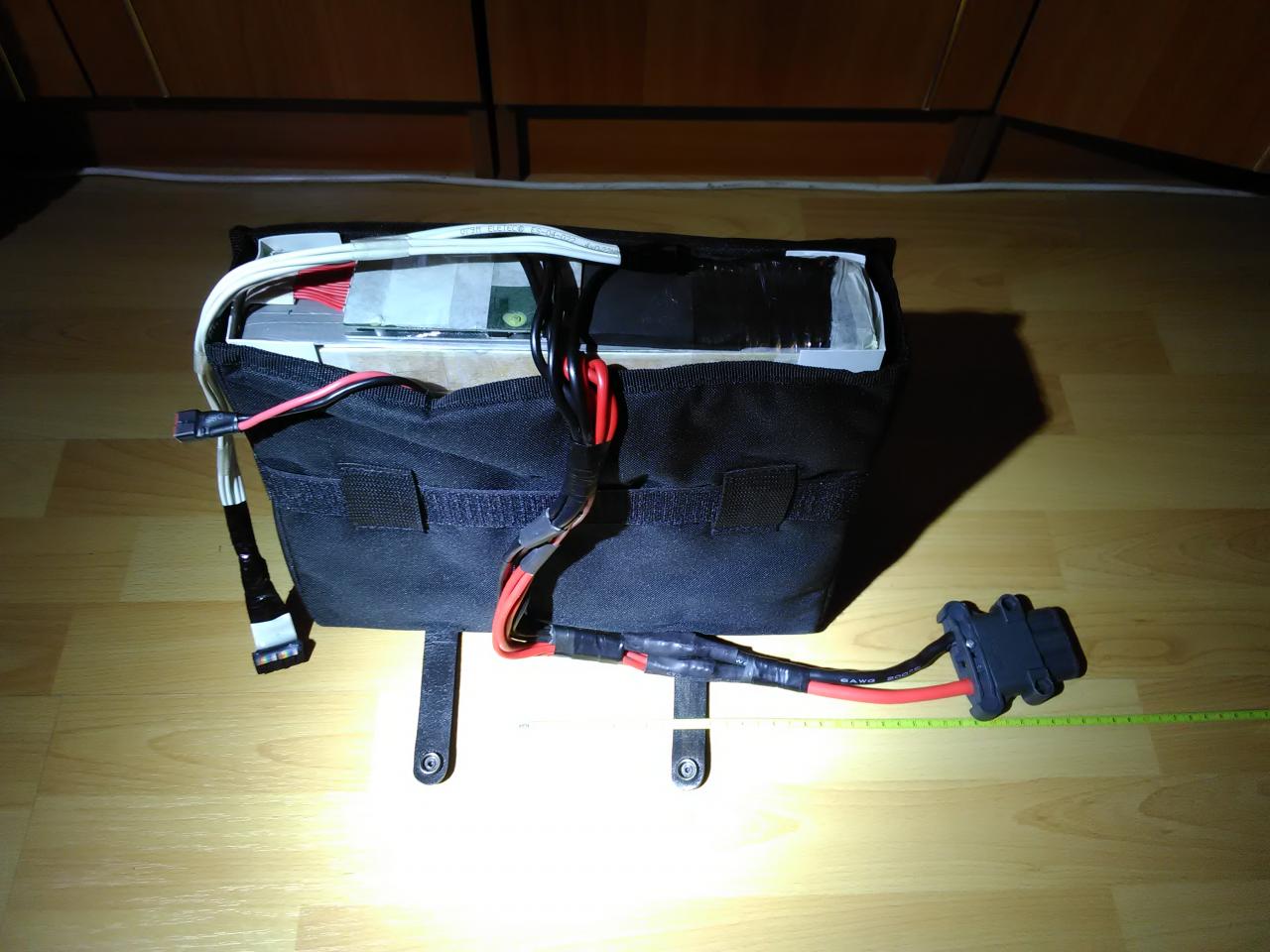
Briefly its characteristics again:
- configuration 15S16P LG HG2;
- rated voltage 55 V;
- capacity: 46 Ah;
- operating voltage range: 45 - 63 V;
- continuous discharge current: 80 A;
- short-time discharge current: 320 A;
- stored energy: 2.6 kWh;
- section of power wires 4x6 sq. mm;
- weight is 12 kg.
In collaboration with the company manufacturing the paramotors with the SkyMax paramotors ICE, the brushless REX-30 2/3 turn motor was purchased:
www.rotexelectric.eu/products/bldc-motors/rex-series
Options:
- long-term electric power: 8 kW;
- short-term electric power: 20 kW;
- weight: 5.2 kg.
A Helix double-blade screw with a diameter of 130 cm is installed directly on the pulley to it.

And on the same site - the controller.
Controller Parameters:
- maximum voltage: 63 V;
- maximum battery current: 250A.
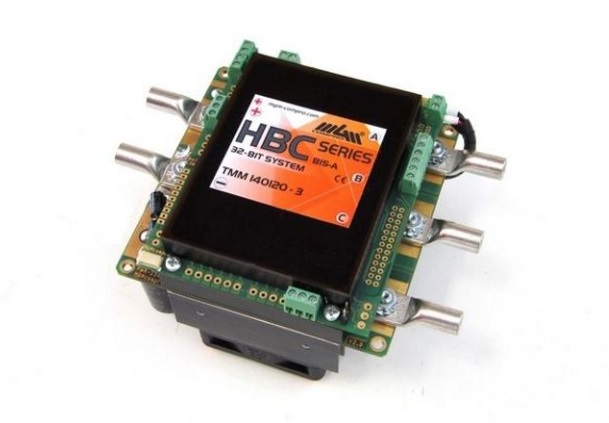
A standard SkyMax paramotor frame with SupAir suspension was used. The battery is placed in a bag in place of the gas tank.
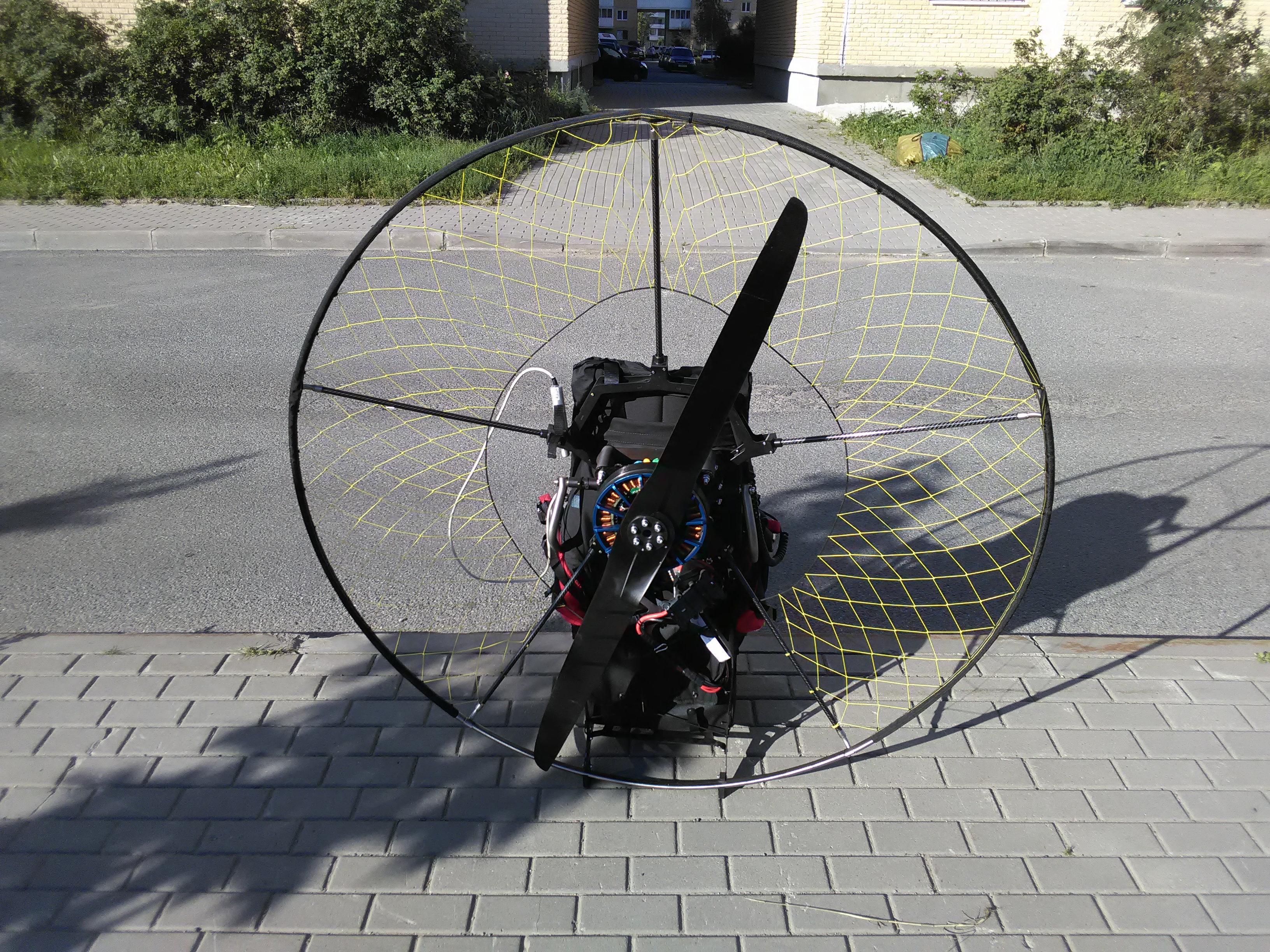
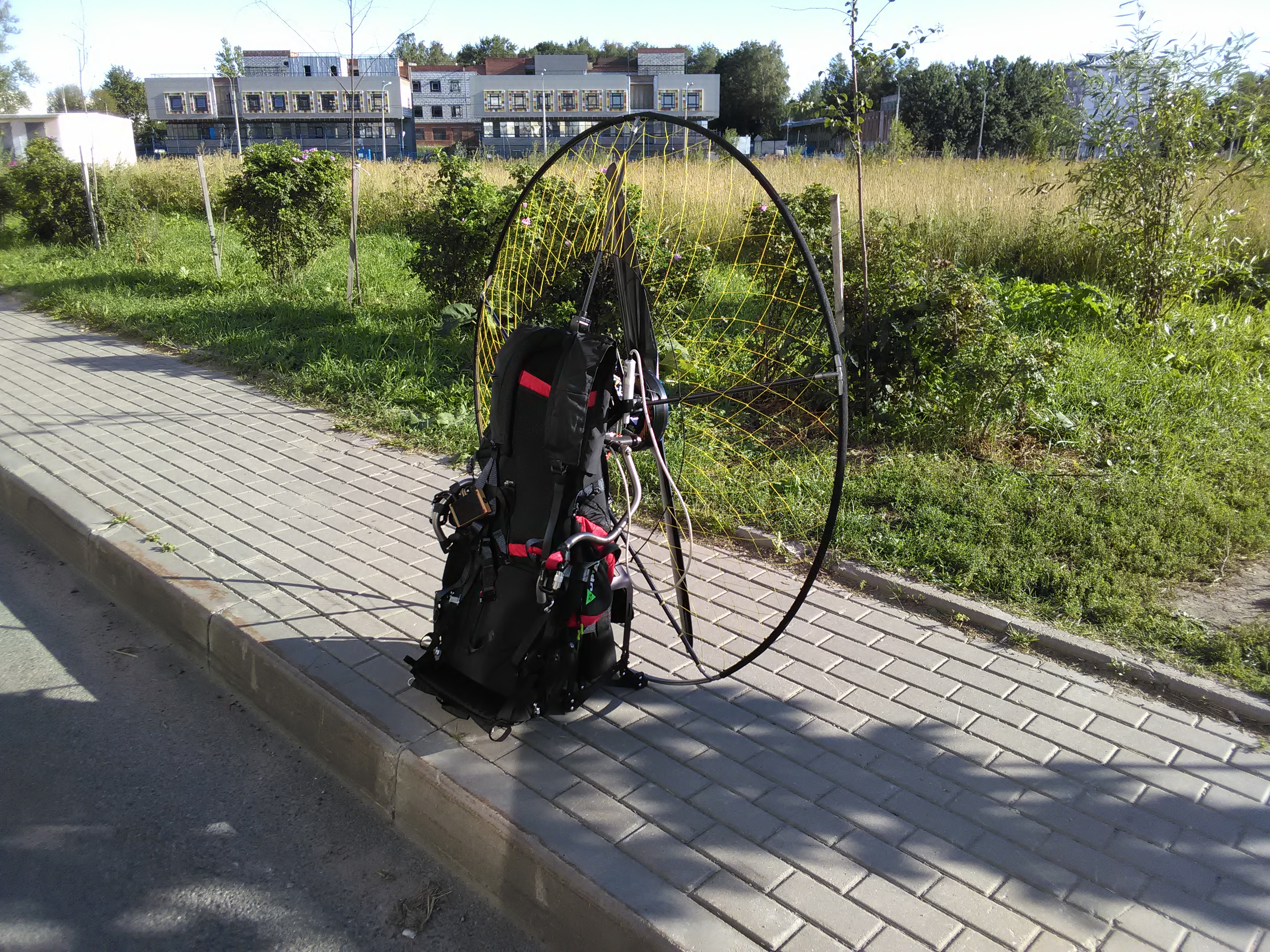
The controller of the electric paramotor has a remote control indicator panel:
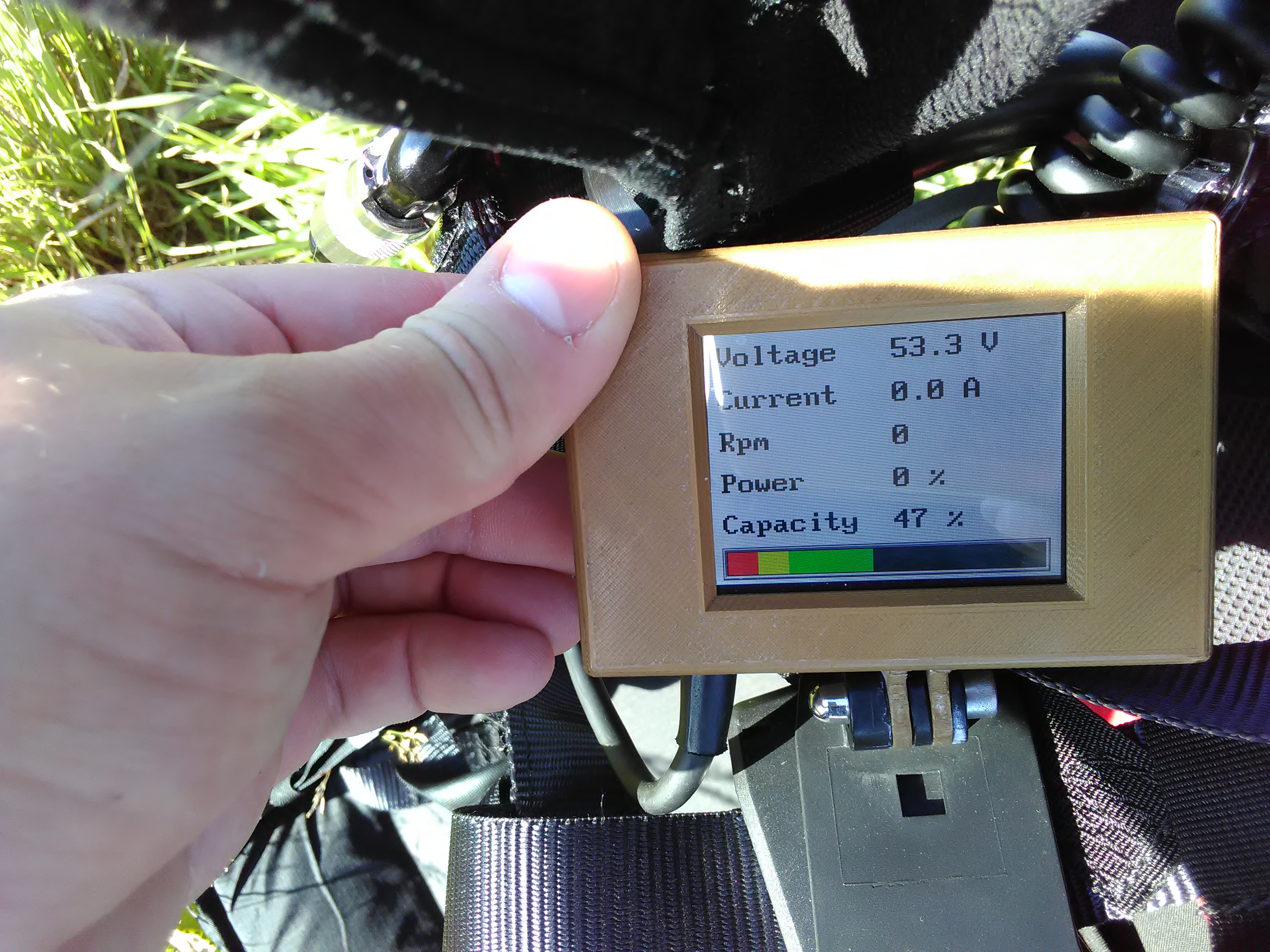
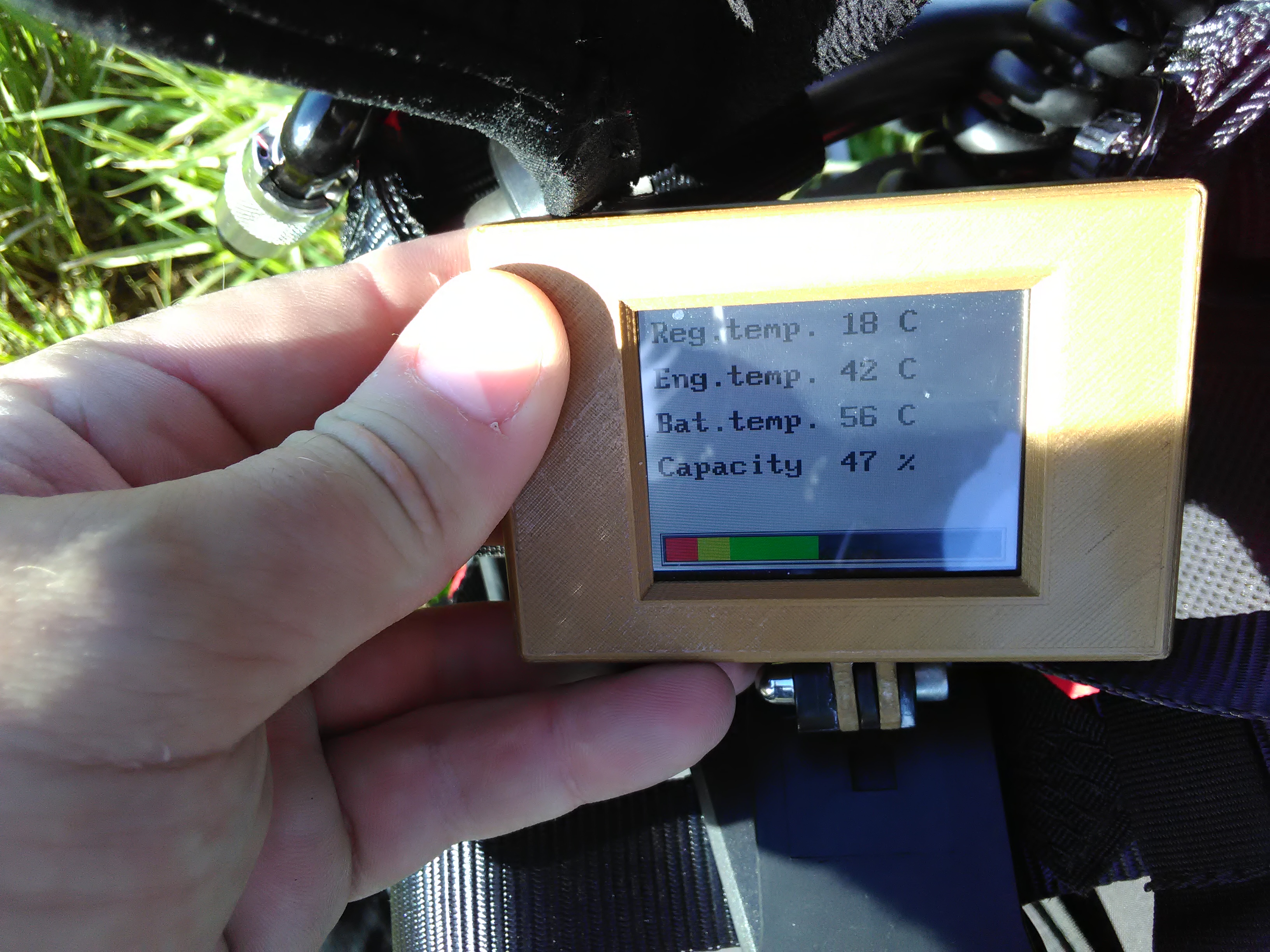
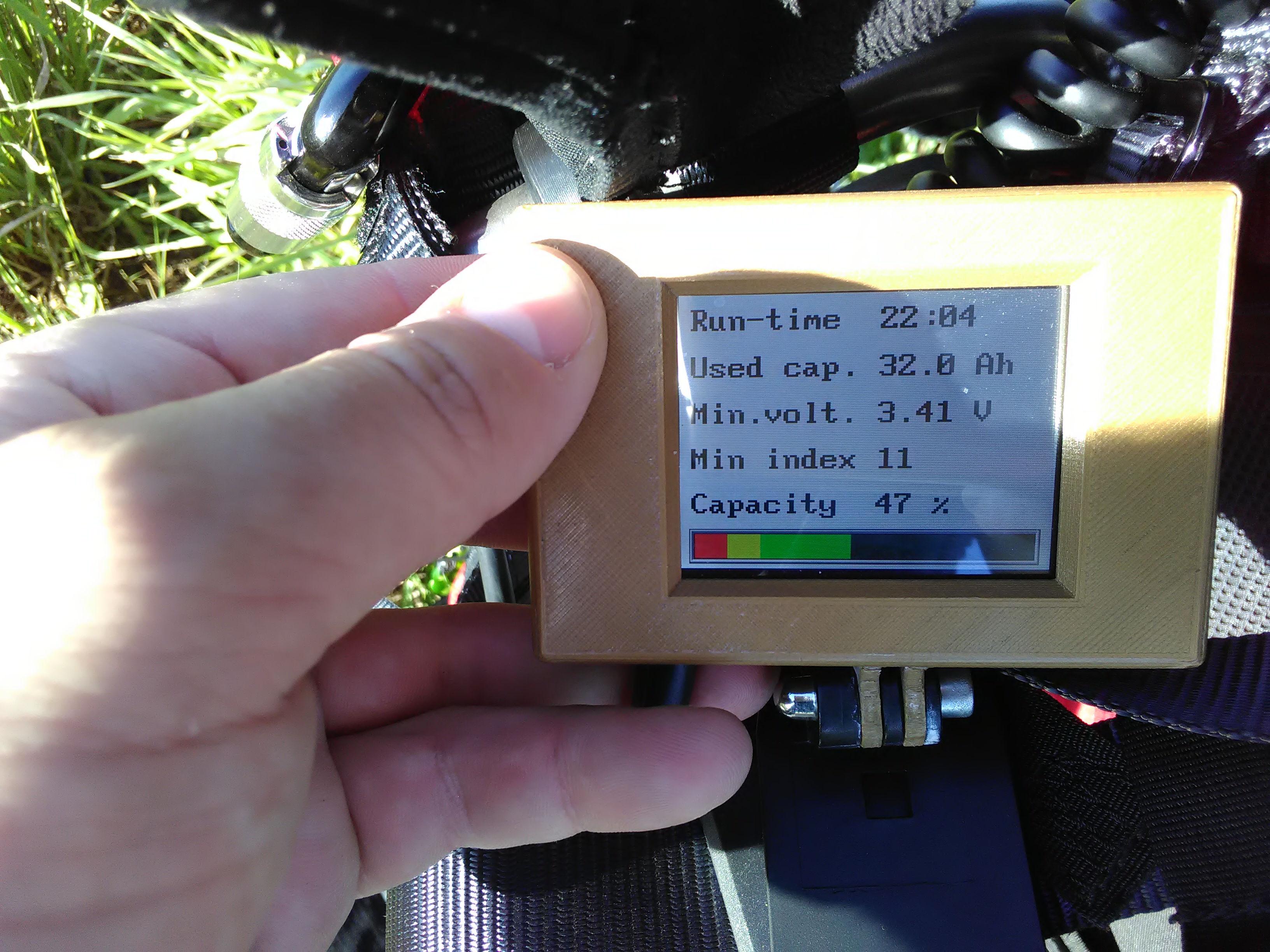
This indicator allows you to see the current consumed current, battery voltage, as well as temperatures of all components in on-line mode in flight.
5. Practice and results of measurements of electrical parameters in flight.
The first flight on the Zorro wing was made by the famous pilot, champion of Russia in paramotor sports Evgeny Stolyarov:
After that, I already made about 30 flights and the total flight time was about 7 hours.
At take-off, a current of 280-300A was applied and the power removed from the battery reached 16 kW (this is 21 hp). Static thrust at the stand was not measured, but I believe that we are talking about 57-60 kg. Takeoff took place very confidently from about 15 steps.
(2:55 - I give full throttle to demonstrate maximum climb)
Flights were carried out on the Tayran-4 paraglider 24 sq.m. Trimmers were mainly used in a neutral position. The weight of the pilot with clothes (me) is about 90 kg. Unit weight - 29 kg.
Weather conditions: summer, autumn, winter. Wind up to 3-4 m / s, sometimes thermal upward flows.
Before the first test flights, I was very worried about the question of what would be the number of consumed electric power in horizontal flight. A lot depended on this figure, especially the rate of heating the battery. I tried to predict it with the help of calculations using various methods. The previous article was devoted to the analysis of one of these techniques.
I was preparing for the figure of 3.6-4 kW, but the reality turned out to be harsher - the power consumption in the steady horizontal flight turned out to be stably about 4.7 kW (55V 85A). I believe that this is due to the worse propeller efficiency than the theoretical value, due to the shadowing of the propeller by the frame, mesh and the pilot himself.
This led to the fact that instead of the expected 39 minutes, the horizontal flight time in practice turned out to be 27 minutes. At the end of the flight, the battery had time to reach 60 degrees, after which the controller gradually reduced power, leaving about 10% of the battery charge unused.
Several times I set the goal of achieving maximum altitude immediately after takeoff.
It turned out that the optimal mode is 8 kW of pumped power and a set speed of 1 m / s. It was possible to gain about 500 meters at a time. Then the battery started heating again. And about 50% of the charge was used. (that is, flying in a thermal train, waiting for the battery to cool, it was possible to gain another 500 meters a second time without landing on the ground).
As for the noise. Subjectively, the situation can be described as follows:
At 25% gas (a slight decrease) - the sound is very noble, a quiet rustle. Ten times quieter than the gasoline paramotor. In this mode, it is convenient to find the thermal fluxes and type in them. The motor does not interfere, the battery consumption is extremely slow, and a decrease of about 0.5-0.7 m / s.
At 40% gas (horizon) - the sound is in principle unobtrusive, but not quiet anymore. The screw is noisy. And makes noise as expected. Somewhere half of the gasoline in terms of noise. I listened to in-flight music with headphones - I had to set the volume to an almost maximum level so that the music could be heard.
At 100% gas (takeoff) - the sound is almost like that of gasoline.
It is very interesting to let off gas in flight and fly in complete silence. Such an operation on an electric paramotor can be done many times. In a couple of seconds you are almost free. There were flights in a termichka. It’s clear that twisting the thermals with such an installation is not the same as using a free suspension, but nonetheless at 200 meters I calmly found a stream without a variometer, twisted it and increased the flight time on one charge for any time until I got bored. The lack of aerodynamic quality, maneuverability is more than compensated by the ability to reduce the decline due to electric traction or even throw a stream and fly to another - more intense.
He flew in the winter in the cold. I did not notice any difference compared to the summer. Battery temperature, flight time - all the same. Power consumption in the horizon is the same 4.7 kW.
Battery charge:

Here I charged with two charges: one dual plastic 63V 9.5A and the second aluminum 10A, all connected in parallel. In this mode, the battery was charged in 2 with a small hour. With one charge - in 4-5 hours.
Conclusions:
- Theoretical calculations as a whole were correct. An error of 20% for a fundamentally new type of power plant is a good hit. Nevertheless, a lesson was learned that a certain energy reserve should be laid for the future.
- The result was an aircraft that would suit pilots who live in the countryside near a suitable territory for flights. Take a pleasure flight, boil in calm evening thermals, stop the electric motor and fly in absolute silence - all this is possible with an electric paramotor.
- An electric paramotor can also be a good way out for those who do not want to deal with the smell of gasoline, setting up a carburetor.
- I don’t feel like fussing the battery cooling system. In the following tests, it will be necessary to check what effect the use of a more advanced paraglider with greater aerodynamic quality will give. The required power will drop - the current will decrease - the overheating problem will go away - the flight time will return closer to the calculated values. Moreover, this will concern pilots who are lighter and have a weight of up to 75-80 kg.